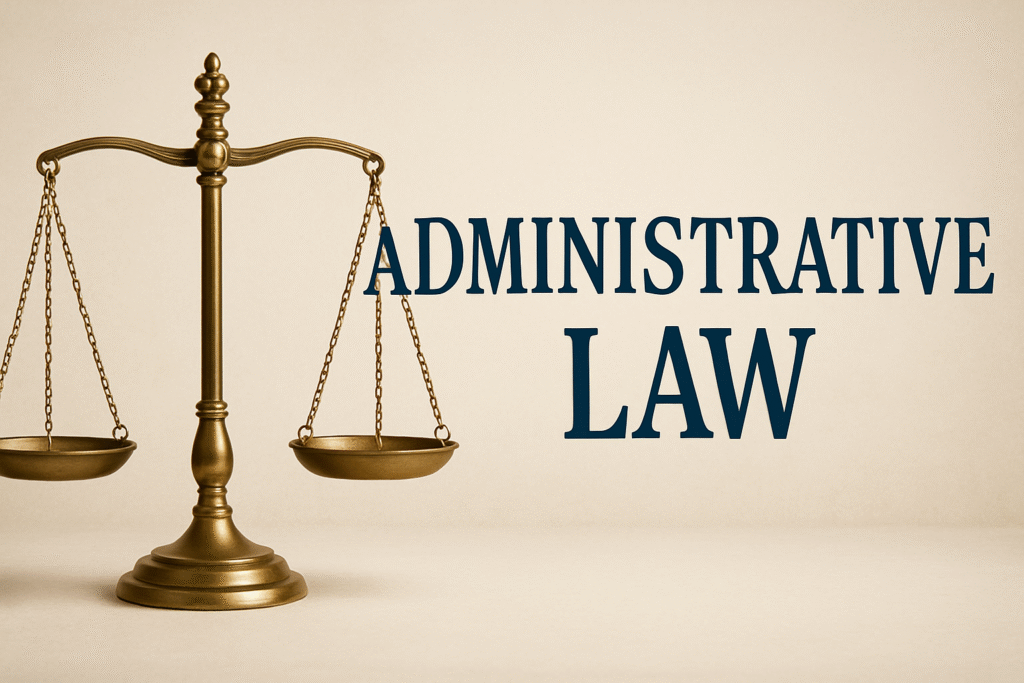Administrative finality is a key principle in Bharat’s administrative law, ensuring that decisions made by government authorities achieve closure and stability in governance. It refers to the concept that certain administrative decisions, once made, are final and not subject to further review or appeal within the administrative framework, except in specific circumstances. Understanding administrative finality is essential to grasp how Bharat balances efficient administration with accountability. This article explores its meaning, legal limits, and significant judicial precedents.
Understanding Administrative Finality
Administrative finality ensures that decisions made by competent authorities[1], such as tax officers or licensing bodies, are conclusive to avoid endless disputes and maintain administrative efficiency. This principle is vital in Bharat, where a vast bureaucracy handles millions of decisions daily. However, finality is not absolute; decisions can be challenged in courts if they violate constitutional rights or legal principles. For law students preparing for exams like UPSC or judicial services, this topic highlights the delicate balance between administrative efficiency and judicial oversight, making it a critical area of study.
Legal Framework and Constitutional Checks
The Bharatiya Constitution does not explicitly mention administrative finality but supports it indirectly through provisions like Article 32 and Article 226, which allow judicial review of administrative actions. Finality clauses in statutes aim to limit appeals, but courts can intervene if decisions are arbitrary, illegal, or violate natural justice. The Supreme Court in Som Datt Datta v. Union of India clarified that administrative finality does not bar judicial review when fundamental rights are at stake.[2] This case is a must-know for government employees to understand the limits of their decision-making authority and for law professionals challenging unlawful decisions.
Judicial Precedents on Administrative Finality
The judiciary in Bharat plays a crucial role in defining the scope of administrative finality. In Union of India v. T.R. Varma, the Supreme Court held that finality clauses in statutes do not prevent courts from reviewing decisions that are mala fide or exceed jurisdictional limits.[3] This precedent is vital for law students studying administrative law, as it underscores the judiciary’s role in preventing abuse of power. Similarly, in State of Andhra Pradesh v. Chitra Venkata Rao, the Supreme Court ruled that administrative decisions marked as final can still be scrutinized if they lack procedural fairness, reinforcing the importance of natural justice.[4]
High Court Contributions to the Principle
High Courts in Bharat have also shaped the understanding of administrative finality. In Calcutta Discount Co. Ltd. v. Income Tax Officer, the Calcutta High Court held that finality in tax assessments does not preclude judicial review if the decision is based on irrelevant considerations.[5] This case is significant for law professionals dealing with taxation laws and government employees in revenue departments, as it highlights the need for reasoned decisions. Additionally, in K. Venkateswara Rao v. State of Andhra Pradesh, the Andhra Pradesh High Court ruled that finality clauses cannot shield decisions that violate statutory provisions, offering clarity for those navigating administrative disputes.[6]
Relevance for Law Students and Professionals
Administrative finality is a core topic in constitutional and administrative law, making it essential for law students aiming for careers in judiciary or civil services. Government employees, such as those in administrative or regulatory roles, must understand finality to make lawful and defensible decisions. Law professionals often rely on cases like Som Datt Datta and T.R. Varma to challenge arbitrary administrative actions in court, ensuring justice for their clients. This knowledge is also critical for competitive exams, as questions on administrative law frequently test understanding of finality and judicial review.
Conclusion
Administrative finality is a cornerstone of Bharat’s governance, promoting efficiency by ensuring closure in administrative decisions while allowing judicial oversight to prevent injustice. Landmark cases like Union of India v. T.R. Varma and Calcutta Discount Co. highlight the judiciary’s role in maintaining accountability. For law students, professionals, and government employees, mastering this concept is key to excelling in legal and administrative careers, ensuring decisions align with Bharat’s constitutional framework and public interest.
References
[1] “Principles of Natural Justice: Definition, Application to Administrative Proceedings and Contours of Application” Rimali Batra and Col Rajeev Anand (Retd), SCC online, available at https://www.scconline.com/blog/post/2025/04/22/principles-of-natural-justice-application-scope-administrative-proceedings/
[2] Som Datt Datta v. Union of India [1969 Cri LJ 663]
[3] Union of India v. T.R. Varma [1958 SCR 499]
[4] State of Andhra Pradesh v. Chitra Venkata Rao [1976 (1) LABLJ 21]
[5] Calcutta Discount Co. Ltd. v. Income Tax Officer [AIR 1961 SUPREME COURT 372]
[6] K. Venkateswara Rao v. State of Andhra Pradesh [(2011(6) ALD 463)]




